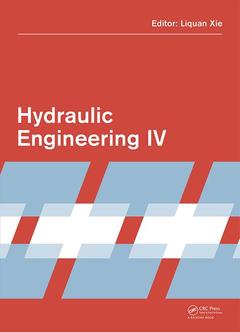Description
Hydraulic Engineering IV
Proceedings of the 4th International Technical Conference on Hydraulic Engineering (CHE 2016, Hong Kong, 16-17 July 2016)
Coordinator: Xie Liquan
Language: English
Subjects for Hydraulic Engineering IV:
Keywords
rake; tooth; reinforce; concrete; pier; finite; element; model; dust; concentration; RBF Neural Network; Dust Removal Efficiency; Benthic Diatom Communities; Moisture Content; Reinforced Concrete Pier; Multiple Linear Regression; Yangtze River; Yangtze; Rogue Wave Solution; Hypoplastic Constitutive Model; Dust Concentration; Anaerobic Co-digestion; Left Turn Traffic; Large Scale Vorticity; Respirable Dust Concentration; Temperature Difference Profiles; Traditional TOPSIS; Flow Field Distribution; Lane Width; TOPSIS Approach; Small Scale Turbulent Structure; Risk Based Inspection Plans; Air Duct Outlet; Total Dust Concentration; RBF Neural Network Model
· 17.4x24.6 cm · Hardback
Description
/li>Contents
/li>Readership
/li>Biography
/li>
Hydraulic research is developing beyond traditional civil engineering to satisfy increasing demands in natural hazards, structural safety assessment and environmental research. Hydraulic Engineering IVcontains 38 technical papers presented at the 4th International Technical Conference on Hydraulic Engineering (CHE 2016, Hong Kong, 16?17 July 2016), including the 5th International Workshop on Environment and Safety Engineering (WESE 2016) and the 2nd International Structural and Civil Engineering Workshop (SCEW 2016).
The sections on hydraulic engineering mainly focus on river engineering and sediment transport, flood hazards and innovative control measures, complex flow modelling, dam safety, slope stability, environmental hydraulics and hydrology, while the contributions related to environmental issues focus on environmental prediction and control techniques in environmental geoscience, water pollution and ecosystem degradation, applied meteorology, coastal engineering, safety engineering and environmental pollution control. The sections on structural and civil engineering mainly focus on underground engineering, construction engineering, road and bridge engineering.
Hydraulic Engineering IVwill of interest to academics and engineering involved in Hydraulic Engineering and Civil Engineering.
Liquan Xie is an associate professor in the College of Civil Engineering at the Tongji University, Shanghai, China. He has more than 20 years of teaching, research, and industrial experience related to hydraulic engineering and geotechnical engineering. He has published more than 60 research papers and spent about 10 years teaching many courses for undergraduate and graduate students. Previously, he worked on the construction of Three Gorges Dam on the Yangtze River, the third longest in the world. He also built up technical experience on the construction of large river-crossing bridges and highways.




